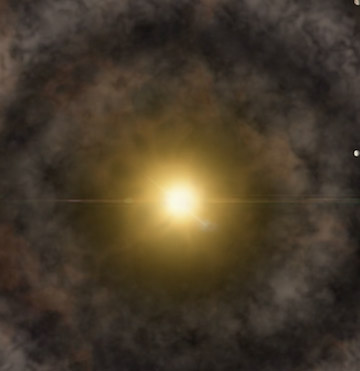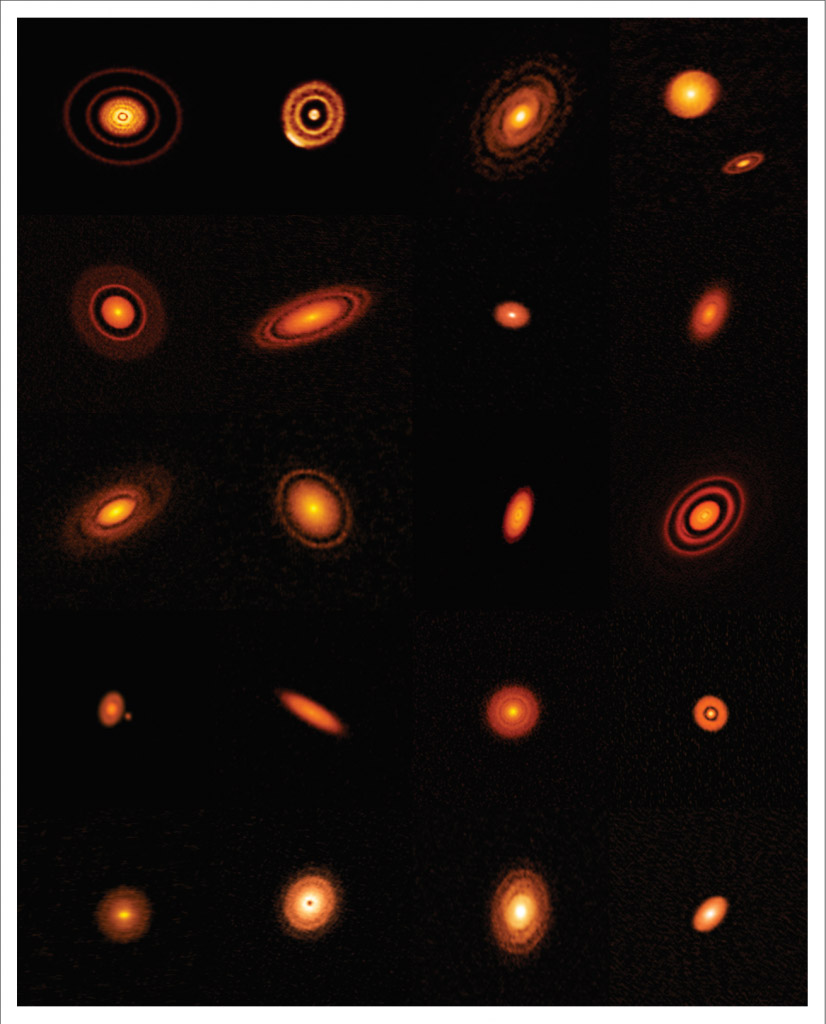Image List
-

Artist's animation of a protoplanetary disk. Newly formed planets can be seen traveling around the central host star, sweeping their orbits clear of dust and gas. These same ring-link structures were observed recently by ALMA around a number of young stars.
Credit: National Science Foundation, A. Khan -

Labeled version of four of the twenty disks that comprise ALMA's highest resolution survey of nearby protoplanetary disks. - AS 209 is a star hosting a disk that is 1 million years old and located about 400 light-years from Earth. The ALMA image shows a tightly packed series of dusty rings in its inner disk and two additional thin bands of dust very far from the central star. - HD 143006 is about 5 million years old and resides 540 light-years from Earth. This star hosts a disk that shows wide gaps between dusty lanes that demarcate the inner and outer portions of the disk. A dense arc-shaped region, possibly heralding a concentration of material where comets or other icy bodies are forming, can be seen on the lower left portion of the outer ring. - ALMA reveals sweeping spiral arms in the dust disk orbiting IM Lup, a young star located about 515 light-years from Earth. These patterns may be the result of an unseen planetary companion perturbing the disk, or a global instability in the disk structure similar to those seen in spiral galaxies like the Milky Way. - AS 205 is a multiple star system, with each star sporting its own dusty disk. Since most stars in the Milky Way are multiples, this observation provides clues to the potential for planets in such systems. This system is located about 420 light-years from Earth.
Credit: ALMA (ESO/NAOJ/NRAO) S. Andrews et al.; NRAO/AUI/NSF, S. Dagnello -

ALMA's high-resolution images of nearby protoplanetary disks, which are results of the Disk Substructures at High Angular Resolution Project (DSHARP).
Credit: ALMA (ESO/NAOJ/NRAO), S. Andrews et al.; NRAO/AUI/NSF, S. Dagnello -

Four of the twenty disks that comprise ALMA's highest resolution survey of nearby protoplanetary disks. This image shows the millimeter-wavelength light emitted by the dust in the disk, giving astronomers a clearer understanding of the similarities and differences among the disks and what that has to say about planet formation.
Credit: ALMA (ESO/NAOJ/NRAO), S. Andrews et al.; NRAO/AUI/NSF, S. Dagnello